Copyright ©2002 by Dennis Báthory-Kitsz
Note, January 2003: Some of the recommendations at the end of this article are already obsolete. If you have restoration questions or needs, please contact me or visit my MaltedMedia home page.
On the Canadian Electroacoustic Community discussion listserv, a question was posed about the future of recording formats. Many composers made suggestions, but Richard Wentk touched on the heart of the issue -- the long-term viability of formats. Here is an essay based on that exchange; comments by Mr. Wentk are in italics, with an edited version of my comments following. At the end of this exchange is a list of ideas and suggestions for preserving electroacoustic works for the future's past.
I'll be surprised if you'll be able to find a working S/PDIF or AES/EBU connector on anything. This may also be a problem with CD in the long term. Hard disk data seems to be much more durable.
No data is safe.
I have been involved in archiving audio from various eras to new formats, and have also been part of the computer scene, for over 25 years.
Nine-Track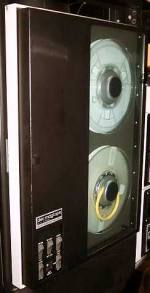 Credit |
Domesday Credit |
Portapack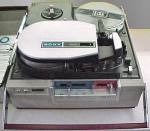 Credit |
TEAC TCA-42 Credit |
dbx Record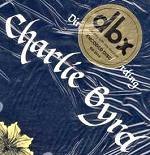 Credit |
Dongle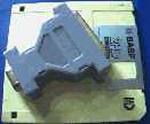 Credit |
Compact Flash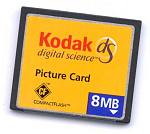 Credit |
Our Vermont state archives can't read old census data tapes, nor could the U.S. government; the last of the 9-track computer tape itself has ceased manufacture. The copy of the Domesday Book of 1086, a project undertaken at the cost of 2.5 million pounds, with the results so carefully stored in digital format, is now on unreadable disks (gently called "media decay" -- read here: http://www.ananova.com/news/story/sm_534847.html)
Even in simple media, data stored on single-density floppies is endangered, not to mention the old data cassettes. In fact, data for any machine no longer produced -- data that had proprietary formats that hasn't yet been transferred -- is likely gone.
Older video formats are vanishing -- Sony Portapack videos long gone, Beta tapes in various guises (including audio-only hi-fi recordings), large format video discs (CD/capacitive discharge discs), and so on.
Audio formats? I have archived pieces from reels in various sizes and formats, high-speed cassettes, endless loop reels, Elcasets, and even original creations for 8-track cartridges(!). Noise reduction (Dolby A/B/C, dbx I/II). Anyone remember dbx LPs? 4-channel 1/4-inch dbx-I tapes (I worked in that format, and my machine is still limping along as I transfer to digital form -- but still keep in mind this important essay: http://www.waves.com/german/htmls/service/faq/dont.html
And where will all the digital formats go? Not just CDs or format-flavor-of-the-month DVDs, but hard drives that no longer use IDE or SCSI interfaces? Does anybody remember the "standard" S100 bus, to which the US government was about to commit, just before the IBM PC arrived? Even if the hardware survives, what software will read the three or more PC formats or the Mac formats? And what about reading those data CDs in old formats? Or trying to extract audio from a scratched or chemically imbalanced compact disc on the brink of death?
Have you committed to one company's software? Especially copy-protected software? When those companies die, and they will, where will your projects, your hundreds of hours of electroacoustic creation, go? Will you keep your old computer around and maintained to be able to read that data and use that software? And when your dongle fries, then what? Or you can't get further authorizations from a dead company? Or even a Microsoft or Apple decides no longer to support the format/software/hardware/interface you use?
No laptop or disk is safe. It's been suggested that memory be used -- static memory of the flashcard type is getting larger & cheaper. But what machine will read it in 10 years? Reproduce it? And understand the meaning of the data (sound? commands? spatialization? automation?...)? How about those digital cameras about ten years ago ... I am close friends with an artist with documentary photographic work entombed in a Konica unit, and no way to get it out.
Of course, there are distributed networks. The Internet as storage, depending on the willingness of the storage company to stay in business (remember the mp3 lockers?), has possibilities. Until you're a victim of commerce.
Some reading:
In other words, use the best medium you can for now. Make transfers as soon as the format shows signs of vanishing. It's a massive amount of work.
In a conversation with Irixx [composer Miriam Rainsford] last week, I promised one of my sample pieces from 1972. It took two days to recover the tape and convert it to digital format -- and even after doing it, I realized there's information/sound on that tape that I remember, but has been lost to aging.
If you can bear the archiving of your own works, do it. Don't think a future technology will save you. Unless you're surrounded by Stockhausenian acolytes, your work dies shortly after you do.
(There's always paper. Reels of PCM data cleanly stored on acid-free punch tape....)
I think my point was that it's now possible to use hard disks for live always-accessible archiving, and that it's not unreasonable to assume that this will remain possible indefinitely. If a new format arrives, as it undoubtedly will, all that will be required is to copy the old information to the new format, either directly or via a network. No off-line archiving required. ... So even if you stop composing today, you work will take up an ever-shrinking (relative) volume on any future online storage technology.
How many assistants do you have? :)
Seriously, the time and dedication required to update to new formats is enormous. I have, for example, many pieces created in multichannel audio within Sonar, running under Windows, using DX plugins and a library of my own samples, with automation. This also includes many experiments and sketches. My 1986 interactive piece In Bocca al Lupo (along with many others) is already lost, probably forever, even though the hardware, interfaces, software, circuit diagrams, sound samples., etc., are all intact. That's because the computers on which it was created no longer function.
In Bocca al Lupo Tech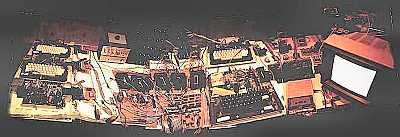 Credit |
You probably know all this, but for others reading who haven't given a thought to preserving their works: What I mean is that merely updating information to a new format does not accommodate the actual content ... it merely converts the bits from one format to another. It still requires either the maintenance of the original hardware and software to reconstitute the piece, or converting all the material, samples, automation, plugins, and output & control hardware to equivalent new software and hardware that behave the same as the previous devices, and can read the contents of the archives correctly. (And yes, I do even steal from myself, so I like to have my own previous materials at hand.)
All of this assumes someone has resources for this preservation. Even archiving, say, the sketches and drawings of a 19th century artist requires a substantial infusion of money and time. Imagine someone interested in pursuing the career of a minor artist like you or me. How will they turn our information, copied faithfully to new formats, into the works we actually created? Certainly, they won't. And even the greatest artists using technological tools? How will future students learn how they worked if their sketches are either gone or entombed in unusable formats?
This is not really about compulsive composers, or about history recorded from a distant future. It's about the loss of near-present history and still-developing artworks due to fragility of technologies. I hope you followed the links to the Domesday Book disaster (http://www.ananova.com/news/story/sm_534847.html) or preservation of originals for future use (http://www.waves.com/htmls/service/faq/dont.html). They reveal a deeper problem that merely upgrading to software 4.x or hardware with new output jacks will not fix -- and the latter article addresses a crisis that is already befalling thousands of compositions created on "professional" tape and equipment in the 1950s-1980s.
It would take more than 5000km of ECMA-10 tape to store one CD's worth of 16/44.1 audio. (It says here.)
Next time I'll add the smiley. Here are two for good measure: :) ;)
Some composers left their sketchbooks, but most of those have been lost. Usually what we have are copies of print editions and the occasional manuscript (or two). Both of which almost always have ambiguities. And that's not even getting into the debate about 'authentic' orchestration and performance practice.
Right. On the other hand, electronics and electroacoustics put us in a new era. The determined authentic original instruments mavens can copy a serpent or stamp out a few thousand copies of harpsichords, but recovering recorded media (analog or digital) is another matter. It's not just about sketchbooks or manuscripts, but also the final creation. It's as if the harpsichord itself contained the music, and only the original ones would play it; new ones would be lovely, but mute.
Killer Credit |
Yes, today it's already possible to emulate earlier instruments, but I don't see that ability ending the slow destruction of the materials it would emulate if it could only 'remember' back that far. How many of us can write an emulation patch for a home-brew synth from 1968? Indeed, many composers' interactive and live work is meant to be done on very specific hardware. 30 years ago, I built my circuits; 25 years ago, I switched to an Ionic synth (http://maltedmedia.com/people/bathory/killer.html). The home-brew circuits are gone (as are the tapes created by them), but this instrument survives, and I've just repaired it. Useful? Dunno yet.
But how much system-specific content will be lost overall? Live/interactive creations are not just about archiving some sort of final product.
But the problems aren't just practical but political. There is far, far, far more music being made now than at any previous point in history.
This is an important point, even if it's debatable. Just because there's far more music being distributed or recorded doesn't mean there's more being made -- only that our attitudes and abilities have changed to make it appear to be more. But yes, the "political" notion is correct ... businesses are more likely to archive trivial memos than are artists the fruits of years' work.
So it's possible that future generations simply won't be interested in archiving in the way that we are now, if only because they'll need near-immortality to get to grips with the source material.
K.S. Goodman Book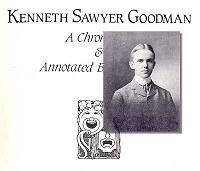 Credit |
Maybe. As an archivist-for-hire :) I'm faced with recovering, organizing, and cataloging what others didn't think or care to do for themselves. I archived the complete (surviving) creative output of playwright Kenneth Sawyer Goodman (for whom Chicago's Goodman Theatre was named) for a book published by the Newberry Library in the early 1980s. Goodman, who died in (as I recall) 1918, kept sketches, diaries, photos, travel journals, notes, playbills, drawings, letters, paintings, and various ephemera (including costumes). The task was large (it took two years, working one day a week), but was manageable. I was also hired to archive the work of his grandson, fluxus artist Ken Dewey who died in 1972, but it was substantially more difficult, including not only paper material, but also audio and video tapes, film, photos, records, and the much larger body of not-so-"ephemera" that is central to much work since 1950. The work we're talking about -- recorded audio as a creative effort -- was only 20 years old when Dewey's death in a plane crash ended his career. Yet we haven't begun to solve this problem in a full 50 years.
It's also about willingness and economics. Companies record and archive everything -- the whole field of 'document management' has built up around it -- and store vast fields of digital media, microfilm, and other formats, ultimately, in huge underground caverns. If only we had document management as a habit for artists -- and, as you mention, a modicum of 'political' will, plus (and this hasn't been mentioned) a concern among manufacturers for ease of migration, materials bundled losslessly upward to new cross-platform, cross-product formats -- then I might be less concerned about the neglectful and sometimes (in terms of capitalist competition) willful loss of an era.
I'll admit I'm slightly suspicious about the urge to archive everything, both historically and creatively. If you're going to archive every single sample and plug-in setting, just because someone might find them interesting, you might as well archive every letter, every email, every business document and every phone call - something which will become possible eventually, perhaps quite soon. But would it be a good thing? I suspect not.
I didn't mean this to be a suggestion to archive everything. It began -- and the thread subject remains -- about future recording formats. Future recording formats do not solve the problem of past recording formats ... as those future recording formats will themselves one day become past formats. Larry Austin's recovery of Cage's work has already been mentioned. That's a lesson in taking care of the critical materials (final or raw) needed to recreate a work at all, much less as the composer expected.
Austin Credit |
Zvonar Credit |
I should note that finding an ADAT, a vanishing technology, to present Larry's Williams [Re]mix[ed] or Richard Zvonar's Frikkit at our Ought-One Festival last year was yet another lesson. Manfred Clynes, on the other hand, provided his material as PCM files on CD-ROM, which I read and synched with my computer. But in a few years, will even they be useful?
My own feeling is it's more interesting to let old work go.
Which, I'm sorry to say, is likely to perpetuate the Dead European White Male material, where old creations continue to exist in reproducible and easily readable form (scores). To "let old work go" -- our old work -- is to consciously agree to diminish its value in the face of what already exists, as largely we do not have 'publishers' for the material needed to recreate this state of reproducibility/readability with EA and related creations. (It's an irony that in the time of bit-perfect reproducibility, the future of such works is at risk!)
As a composer, I don't keep most of my drafts, either ... though my archivist side is always troubled by this. I do try to keep the materials needed to rebuild my electroacoustic and especially interactive EA work, on the other hand. But, as I mentioned earlier, the struggle with recovering a 1972 4-channel piece in analog format, and the near-complete loss of the computer-managed interactive installation In Bocca al Lupo (in many ways a landmark piece, but only marginally recognized because of its limited life 16 years ago), led me to re-evaluate how often I transfer older work to new formats.
I took a break from typing this response to get another cup of coffee. Magazines are dropped around our house in frequently visited corners. An essay from November that I hadn't yet finished was still open, albeit coffee-stained. In "Brick Wall" Charles D'Ambrosio (Harper's Magazine, November 2001) speaks of ongoing progress and rebuilding in Chicago: "There were piles of rubble such as you imagine in war, but the absence of declared enemies and the lethargic unfolding of time kept people from seeing the scale of the shift as catastrophic."
As archivists around the world are discovering, the unfolding loss of the creative results of our technological near-present history are indeed catastrophic. But because electronic/electroacoustic/computer works fade, slowly, one by one, leaving tiny piles of rubble visible only to those who pass by and notice, we artists -- always bustling with progress and building up our new ideas and shucking off the past as, well, the past -- have become both the persecutors and the victims of this impending historical disaster, and unwittingly welcome the undoing of what we set out to accomplish.
Well, I see this as being due to the young and still experimental nature of digital technology. I expect it to settle down in a few decades, and once technology becomes either more standardised or open-ended, or perhaps both, fragile archiving will be a thing of the - er - past.
I doubt it. We are not occupied at all with preservation. I've spent some time exploring this here because there is an impending 50-year (or longer) gap in some of our most imaginative work. At some point those 2-channel 44.1 16KHz CDs are going to sound like erstwhile 78 rpm shellacs -- and wouldn't you like to know what they were really meant to sound like? And how the interactive creations were supposed to be presented? To study or teach how they were made?
|
What's obsolete? Almost everything! And more every day! Here's a beginner's list:
|
What should electronic/electroacoustic artists do?
You can hope and put trust in the future. But hoping that popular formats survive -- even the widely used Mac/Max/Msp or Windows/Sonar materials -- is too much of a risk.
So you must be proactive, and take basic preservation steps.
For analog materials, first make sure your originals are stored in good conditions; use the recommended temperature and humidity that the tape manufacturer suggests.
Then make copies into the highest quality digital format now available, and, if possible, use the original machine for playback. Use these recommendations: http://www.waves.com/german/htmls/service/faq/dont.html
Problematic originals include spliced tapes, poorly stored tapes, bad oxide formulations, and obsolete formats.
If the splices are good, leave them alone; but if the splices are separating, replace them. 3M 'blue' archival splicing tape is still available -- get it while you can.
Poor storage can cause stretch tape and feathered edges, both of which mean dropouts and phase problems. Contact the Electronic Music Foundation (http://www.emf.org/) for information on how to transfer poorly stored tapes.
Bad tape manufacture has caused nightmares, such as sticky, squealing tapes that clog playback heads (particularly some Ampex mastering tape from the 1980s) and bad binders that cause oxides to fall from their backing. Sticky tapes can be baked (yes, in an oven) at low temperatures, and then transferred before they become sticky again. With bad binders, you get one chance at transfer -- set up and do it quickly under ideal conditions.
Again, the Electronic Music Foundation can give advice.
Finally, obsolete formats can create a personal artistic crisis if you no longer have the hardware. Even if you do have it, run -- do not walk -- to your nearest service shop and have the machine brought back to its original specs ... or at least purchase new belts and rollers and do the work yourself. In any case, transfer obsolete formats immediately and then store the originals in controlled storage.
For digital materials, preservation will be much more troublesome, and this is the simplest set of guidelines.
If your material is a simple 'final product', make several digital transfers in audio, DVD and data formats. The data format will be more exact (more recoverable, with its error checking) but the other formats will likely have a longer life in terms playback equipment.
If your creation is a more complex final product (multimedia CD, interactive presentation, or live mixing/diffusion), first annotate the work in detail. This is a critical stage, because memory fades. I have forgotten how to run my own interactive work from the 1980s because I didn't write down a description of how to do it. Be clear -- indicate the hardware (computers and interfaces) and software materials needed, the process of their assembly (including circuit and block diagrams for hardware), the order of connections (with power supply information), software organization (operating systems, software order, libraries, and plugins), the process of presentation (the 'score'), and how the piece is to be reproduced/diffused. Ideally, include documentation from existing satisfactory presentations.
Once it's fully annotated, you'll also need a complete archive of software and data. If all of your creations are generated with one set of software, you would think that one archive of that software should do. But don't depend on it. Because over time software is upgraded or components are changed -- and you inevitably forget that's happened -- it's best to archive all the soft materials for each piece as a bundle: Text notes, final creation, software and associated plugins and libraries (including installers and licenses and license keys). For serious archiving, include a copy of the operating system, a system description, sound drivers, and even the original sound cards in static-free envelopes. You may be an unknown artist now, but in a generation or two, who knows?
Source materials are valuable for you as well as archivists. You might want to dip back into a sample library, extract individual tracks from a 'thicker' work, or build existing material into a new composition.
I am a habitual archiver of electroacoustic drafts (all drafts, actually). I don't make an effort to archive; I simply don't trust my hardware or software very much. So I drag copies of source material into a working folder, and I save my project in a constant stream of new numbered filenames (QaXing001, QaXing002 ... QaXing091 ... QaXing179...). This builds a complete data archive in the project folder, all of which is dumped off to CD when I'm finished.
Where do you store your digital archives? Today's choices are limited: CD, DVD, hard drive, or Internet service. As of early 2002, DVDs aren't yet economical and the vagaries of Internet service providers are legendary -- leaving the choice as CD or hard drive.
CDRs Credit |
Hard Drive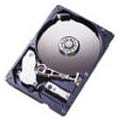 Credit |
(By the way, do not compress your data, and if you use CDs and must span several discs, be sure to include a copy of the spanning software with the archive.)
Maybe.
It's been my experience that artists -- both composers and performers -- are sometimes reluctant to document what they've done. Some artworks do not hold up to history, whereas their legends do. Other creations are badly represented by documentation, such as the 'happenings' of two generations ago. Still others combine serendipity and good luck enough that a clear archive is not possible or desirable; the result is all.
Yet where it is possible, and you as an artist believe in your artwork, then preserve the future's past.